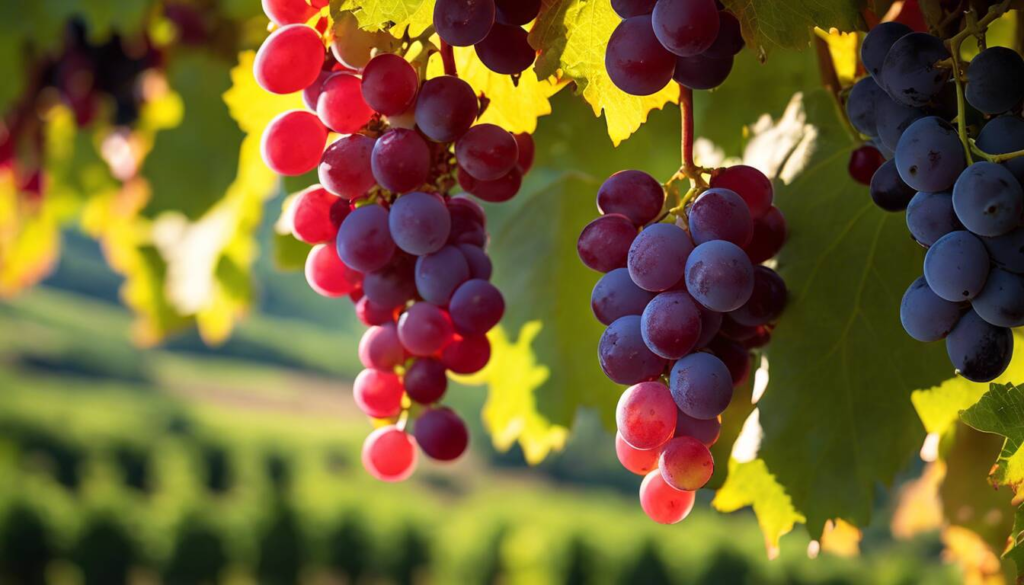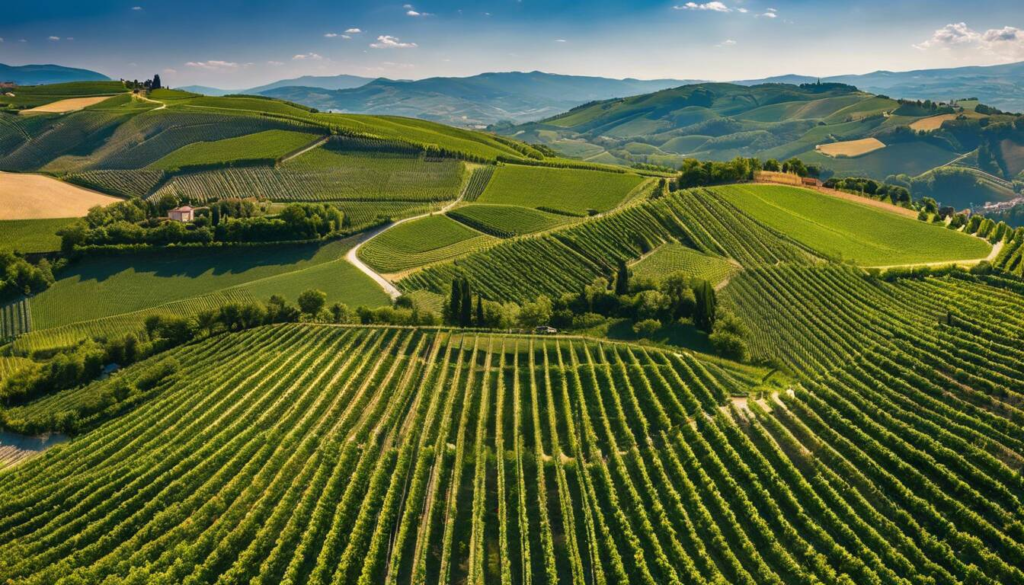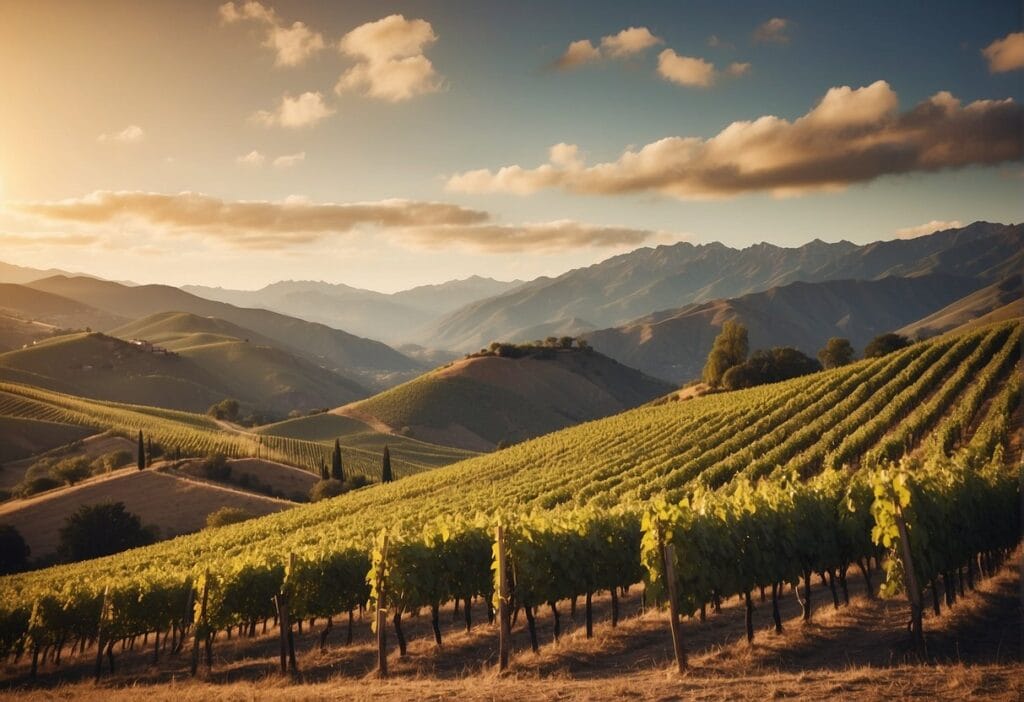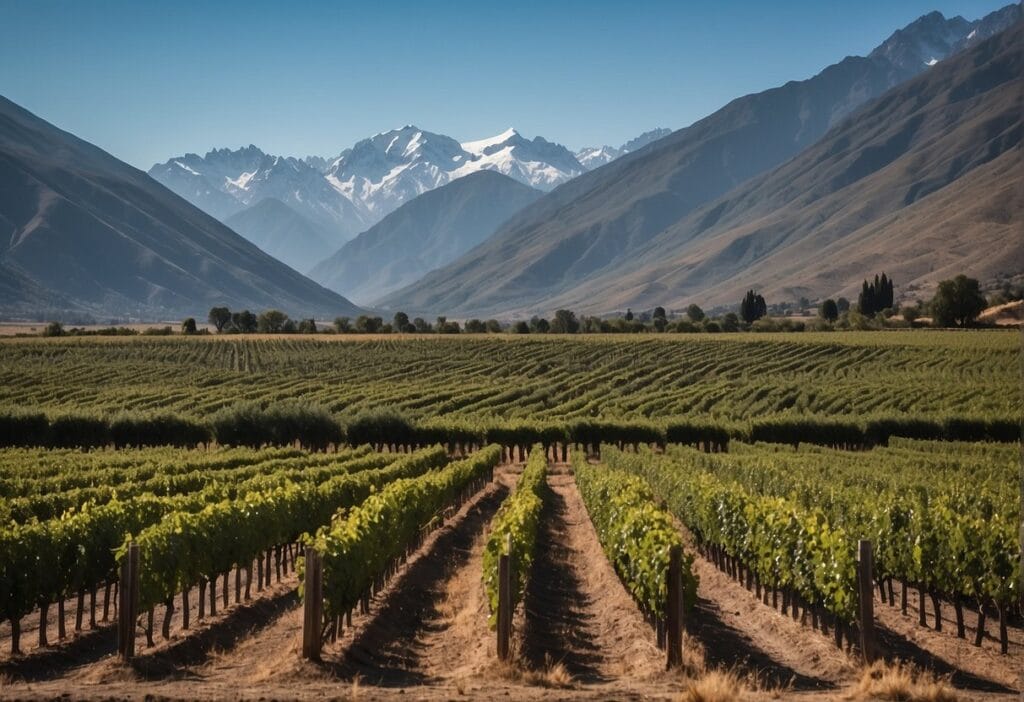Piedmont is a treasure trove of grape varieties, particularly indigenous ones like Nebbiolo, Barbera, Dolcetto, Cortese, and Arneis. Each of these grapes harbors unique characteristics finely shaped by the region’s distinctive topography and climate. From Nebbiolo’s powerful full-bodied reds echoing with hints of tar and roses, to Cortese’s crisp whites worth savoring on a slow Sunday, Piedmont varietals offer an astonishing diversity. The tantalizing smell of ripe Barbera simmering under the summer sun might just be the hint you need. Let’s dive deeper into this rich viticultural tapestry.
In Piedmont, notable grape varieties include Nebbiolo, Barbera, Dolcetto for red wines, and Cortese for white wines. These indigenous grapes contribute to renowned wines like Barolo and Barbaresco for Nebbiolo, while Barbera and Dolcetto are used for producing vibrant and flavorful red wines.

Introduction to Piedmont’s Viticulture
Piedmont, snugly situated in the hilly northwest of Italy, is a viticulturist’s dream. It’s renowned for its vineyards that yield some of Italy’s most lauded wines. The region’s rich history and captivating landscape have earned it the prestigious status of being one of Italy’s premier wine regions.
Protection from the elements plays a vital role in cultivating grapes that possess distinct flavors, making Piedmont wines truly stand out. The encompassing mountains safeguard the vineyards, providing a unique microclimate with ample sunshine and well-drained soils—ideal conditions for producing wines that encapsulate the essence of the terroir.
The indigenous grape varieties deeply rooted in local tradition have flourished here for centuries. Varieties such as Nebbiolo, Barbera, and Dolcetto are intricately woven into the cultural fabric of Piedmont. They express the land’s character in bold and intricate ways, allowing each sip to narrate a compelling story of the region’s history and heritage.
The combination of diverse terroirs, mesoclimates, and varying vineyard elevations within Piedmont contributes to crafting wines with remarkable complexity and elegance. Whether it’s the gentle slopes or the higher altitude sites, each location adds its own distinctive touch to the final product, showcasing the region’s exceptional winemaking capabilities.
From the picturesque Langhe and Monferrato hills to the historic provinces of Asti, Alessandria, and Cuneo, Piedmont cherishes winemaking traditions closely intertwined with its culture and identity. These traditions date back to the Middle Ages when French influences shaped both cuisine and wine culture in this enchanting region.
Piedmont boasts an impressive array of indigenous grape varieties like Nebbiolo, Barbera, Dolcetto, and Cortese, alongside international stars such as Chardonnay and Sauvignon Blanc. The mutual relationship between these grape varieties and Piedmont’s distinctive terroir brings forth an unparalleled depth of character and flavor in its wines. Each sip reflects the sheer mastery and artistry of winemaking in this captivating Italian region.
Piedmont stands as a testament to the harmony between nature, tradition, and innovation—a place where vines intertwine with history to produce some of Italy’s most exquisite wines.
With a deeper understanding of Piedmont’s viticulture, let’s now delve into an overview of the unique grape varieties that thrive in this celebrated Italian wine region.
Overview of Piedmont’s Grape Varieties
Piedmont’s grape varieties are as diverse as they are renowned. The region is home to both indigenous and international grapes, but it’s the native varietals that stand out, defining Piedmont’s exceptional winemaking culture. Let’s take a closer look at the key grape varieties that produce some of Italy’s most coveted wines.
Nebbiolo
Considered the “king of grapes” in Piedmont, Nebbiolo is a red grape variety responsible for producing some of the most esteemed and age-worthy wines globally. Renowned for its powerful tannins and complex flavors, Nebbiolo grapes find their fullest expression in Barolo and Barbaresco wines. These wines exhibit a mix of floral aromas, red fruit, earthy undertones, and ethereal notes of tar and rose petals, which evolve beautifully with age.
Barbera
While Nebbiolo takes the spotlight, Barbera quietly thrives as one of Piedmont’s workhorse grapes. Recognized for its high acidity and food-friendly profile, Barbera grapes yield wines with luscious red cherry and blackberry flavors. Often aged in stainless steel or neutral oak to preserve its vibrant character, Barbera is adored for its versatility and approachability compared to the more intense Nebbiolo-based wines.
Dolcetto
With its name translating to “little sweet one,” Dolcetto produces easy-drinking red wines characterized by low acidity and soft tannins. These wines boast flavors of ripe blackberries, plums, and hints of almonds. Often enjoyed young, Dolcetto wines offer a pleasant fruit-forward experience without the need for extensive aging.
Cortese
Switching gears to white grape varieties, Cortese shines as an indigenous grape producing Gavi DOCG wines. Refreshing and aromatic, these white wines display citrusy notes alongside delicate floral and almond nuances. Their crisp acidity makes them an ideal match for a variety of cuisines while exemplifying Piedmont’s prowess in crafting elegant white wines.
Arneis
Another white grape deserving recognition is Arneis, famed for creating compelling aromatic white wines with lively acidity. Exhibiting vibrant notes of pear, apple, and a touch of almond bitterness, Arneis-based Roero Arneis wines captivate with their refreshing character and harmonious balance.
As we unravel the distinctive attributes of each grape variety grown in Piedmont’s wine regions, it becomes evident why these indigenous varietals play an integral role in shaping the identity of Piedmontese wines.
In-depth into Nebbiolo, Barbera, and Dolcetto Grapes
Nebbiolo is often referred to as the “king” of Italian grapes due to its leading role in prestigious wines like Barolo and Barbaresco. This grape variety embodies elegance and complexity, capturing the essence of Piedmont’s winemaking prowess. Picture Nebbiolo as a grape with bold tannins, high acidity, and enchanting aromas of red fruit, roses, and earthy undertones. These remarkable traits give Nebbiolo wines exceptional aging potential and an intense flavor profile that sets them apart.
The bold tannins provide structure and ageability to these wines, akin to the strong foundation of a grand building. Additionally, the high acidity adds liveliness and balance, complementing the robust nature of Nebbiolo. The complex aromas create a captivating olfactory journey.
When you sip a well-aged Barolo or Barbaresco crafted from Nebbiolo grapes, you’re experiencing centuries-old traditions paired with the unmistakable terroir of Piedmont—a culmination of artistry perfected over generations.
The Versatility of Barbera Grapes
Barbera grape stands as the most widely planted grape in Piedmont, celebrated for its vibrant acidity and remarkable versatility in winemaking practices. This grape has earned its place as a cornerstone in Piedmontese viticulture by consistently producing wines with juicy acidity and alluring flavors of red and black fruits.
It’s this bright acidity that makes Barbera wines a popular choice for everyday enjoyment—perfect for lively meals around the table or casual gatherings with friends.
Fun fact: Locals across Piedmont often savor glasses of Barbera alongside heartwarming meals—a testament to its significance as a cherished regional staple.
Embracing Dolcetto Grapes
Dolcetto is synonymous with joyous moments—embracing simplicity while offering delightful pleasures to wine enthusiasts. It’s celebrated for its charmingly fruity profile, characterized by softness, approachability, and agreeable flavors of dark berries. These characteristics make Dolcetto wines perfect for casual consumption and everyday indulgence.
When you taste a glass of Dolcetto wine, it encapsulates the essence of unwinding under the warm glow of the sun, surrounded by picturesque views of rolling hills adorned with vineyards. Its gentle tannins and expressive dark berry flavors weave moments of respite into the tapestry of daily life—a true embodiment of the laid-back allure found in Piedmont’s winemaking traditions.
In essence, Nebbiolo, Barbera, and Dolcetto represent not just grape varietals but stories waiting to unfold within every bottle—each holding unique cultural narratives etched into each drop poured from Piedmont’s revered wine regions.
Spotlight on Cortese and Arneis White Grapes
Cortese Grape: Crafting Delectable Gavi Wines
The Cortese grape holds a central place in Piedmont’s viticultural history due to its role in the creation of Gavi wines. Originating primarily from the Gavi DOCG (Denominazione di Origine Controllata e Garantita), these wines are celebrated for their remarkable acidity, light citrus notes, and delicate floral aromas. The Cortese grape’s ability to retain refreshing acidity even in warm climates results in wines with a vibrant and zesty character, making them highly sought after by enthusiasts of white wines.
Reputed for their crisp and invigorating nature, Gavi wines are often cherished for their versatility when it comes to food pairings. Their lively acidity and flavorful profile make them a delightful accompaniment to a wide array of dishes, ranging from seafood delicacies to poultry-based recipes. This adaptability ensures that Gavi wines remain a popular choice for diverse dining experiences.
Arneis Grape: Unveiling Complexity and Elegance
On the other hand, we have the Arneis grape, responsible for producing aromatic and sophisticated wines characterized by nuanced flavors. Arneis wines often exhibit delightful hints of pear, apple, and floral undertones, offering a captivating blend of fruitiness and subtle complexity. The distinctive freshness imparted by the Arneis grape enriches the sensory experience of these wines, making them an alluring option for connoisseurs seeking finesse and charm in their white wine selection.
Arneis wines stand out for their innate ability to harmonize fruit-forward elements with an underlying layer of refinement. The interplay between fruity notes and delicate floral nuances creates a captivating sensory journey that captivates the palate. The inherent elegance of Arneis wines positions them as ideal companions for moments of relaxation and convivial gatherings, where their alluring personality can be fully appreciated.
Both Cortese and Arneis grapes contribute significantly to Piedmont’s winemaking tapestry, elevating the region’s reputation as a producer of exquisite white wines. It’s intriguing how non-native grapes such as Chardonnay or Sauvignon Blanc have gotten so popular over time, yet these indigenous varieties hold their own against international competition.
Shedding light on the diversity and artistry deeply embedded within Piedmont’s winemaking heritage through unique characteristics of these white grape varieties.
Influence of Piedmont’s Terroir on Grape Flavors
The term “terroir” (pronounced tare-WAHR) refers to the combination of factors such as soil, climate, and terrain that significantly impact the taste and quality of grapes. In the case of Piedmont, its sub-alpine location, protective mountains, and diverse soils contribute to creating wines with distinctive characteristics.
Sub-Alpine Terrain
Piedmont’s position in the northwest part of Italy, nestled near the Alps, creates a sub-alpine terrain with varying altitudes. This topographical diversity influences temperature and sun exposure, playing a key role in grape ripening and flavor development.
Soil Composition
The soils in Piedmont contain a rich tapestry of sedimentary clay, calcareous marl, sandstone, sand, and limestone. This diversity in soil composition leads to varied nutrient levels and water retention capacities crucial for grape growth. Each type of soil imparts its unique mineral qualities to the grapes, ultimately influencing their flavors and aromatic profiles.
For example, vines planted in soils with higher limestone content may produce wines with distinct mineral notes, while those grown in sandy soils might exhibit more delicate fruity aromas. The interplay between these different soil types adds layers of complexity to Piedmontese wines.
Microclimates
Piedmont’s microclimates are equally diverse due to variations in soil composition, altitude, and aspect. These microclimates contribute to the different ripening times of grape varietals in the region.
Specific Grape Flavors
These terroir-influenced factors create wines with specific flavor profiles:
- Nebbiolo grapes yield wines with notes of cherry, truffle, and rose petal due to their exposure to certain mesoclimates.
- Barbera grapes display hints of black cherry, blackberry, and spice influenced by the soils they grow in.
- Dolcetto grapes impart flavors of blackberry, violet, and licorice shaped by the sub-alpine foothills where they thrive.
In addition to these indigenous varieties, international grapes like Pinot Noir and Chardonnay also reflect Piedmont’s terroir through their unique expressions when cultivated in this region.
Piedmont’s complex terroir is pivotal in crafting wines that embody the essence of the region. The subtle interplay between altitude, soil types, microclimates, and sunlight exposure lays the foundation for Piedmont’s revered winemaking tradition. This intricate web of environmental factors is what makes wines from this Italian region so captivating and unmistakable among wine enthusiasts across the globe.
In understanding how Piedmont’s terroir shapes its exceptional grape varieties, we gain a deeper appreciation for the remarkable vineyards and wines that this region has to offer.
Noteworthy Piedmontese Vineyards and Wines

Piedmont has emerged as a prominent region for producing exceptional wines, with its renowned vineyards showcasing the diverse and distinctive grape varieties that define its oenological landscape. Among these, the Nebbiolo grape has gained significant prominence, standing out as the cornerstone of some of the most celebrated wines in the world. Barolo and Barbaresco, both produced from Nebbiolo grapes, have secured their places as iconic wines that epitomize Piedmont’s winemaking heritage, esteemed for their exceptional quality and remarkable aging potential, offering a sensory journey through the region’s rich history and tradition.
The depth and complexity of Barolo and Barbaresco capture the very essence of Nebbiolo, embodying its signature characteristics of robust tannins, bold fruit flavors, and a captivating earthy aroma. This powerful expression is a testament to the skillful craftsmanship of winemakers who harness the distinct attributes of Nebbiolo to create wines that resonate with connoisseurs and enthusiasts alike. These wines serve as ambassadors for Piedmontese viticulture, drawing attention to the profound connection between terroir and grape expression.
Gavi: A Crisp White Marvel
In addition to its illustrious red wines, Piedmont also boasts an array of exceptional white wines that exemplify the region’s winemaking prowess. Gavi, crafted from the Cortese grape, stands out as a shining example of Piedmontese white wine excellence. Known for its crisp and lively character, Gavi captivates the palate with its refreshing acidity and vibrant citrus notes, offering a delightful contrast to the bold profile of Nebbiolo-based reds in Piedmont. The prevalence of Gavi underscores Piedmont’s versatility in cultivating an impressive spectrum of grape varietals that cater to diverse preferences and occasions.
Prominent wineries such as Our Website Name serve as custodians of these illustrious Piedmontese varietals. They offer an unparalleled gateway for wine enthusiasts to explore and appreciate the distinctive characteristics of the region’s wines. By championing the legacy of Piedmont’s vineyards and celebrating the unparalleled diversity of its grape varieties, these visionary establishments enrich the wine landscape with extraordinary expressions that honor tradition while charting new frontiers in oenology.
By exploring these exceptional wines hailing from Piedmont’s distinguished vineyards, we gain a deeper appreciation for the artistry that defines this renowned wine region—the amalgamation of terroir-driven flavors, meticulous craftsmanship, and a steadfast commitment to excellence culminates in wines that not only delight the senses but also resonate with the soul—a testament to the enduring allure of Piedmont’s viticultural tapestry.

